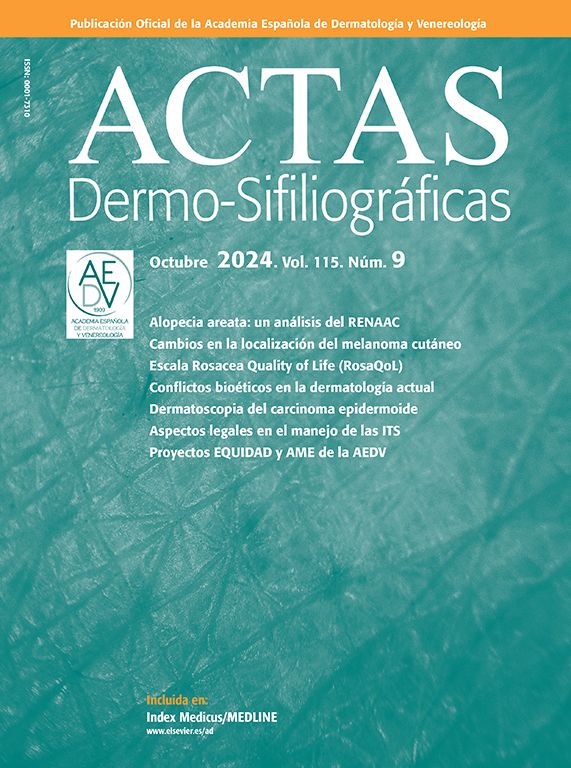A 42-year-old man, an IV drug user with no other relevant personal medical history, presented to the Dermatology clinic with a 4-month history of painful perianal lesions. Physical examination revealed the presence of an extensive, erythematous, and whitish exophytic plaque on the periphery, with a flat surface and some confluent, papillomatous papules on the periphery, completely encircling the anal margin (Fig. 1A). A complete serology panel for sexually transmitted infections was requested, with a positive result only for syphilis, showing positive treponemal (FTA) and non-treponemal (VDRL) tests (1/64). Additionally, the biopsy revealed parakeratosis and irregular acanthosis with marked elongation of the interpapillary ridges and a perivascular mononuclear inflammatory infiltrate rich in plasma cells.
What is your diagnosis?
DiagnosisCondyloma lata (secondary syphilis).
CommentsThe previously described findings led to the diagnosis of condyloma lata, for which 2.4 million IU of benzathine benzylpenicillin were administered as a single intramuscular dose. After 4 weeks, the lesions completely disappeared (Fig. 1B), and a 4-dilution reduction in the non-treponemal tests (1/4) was confirmed.
Condyloma lata is an uncommon sign of secondary syphilis. It usually presents as confluent papules or smooth-surfaced, soft, pinkish, somewhat exudative plaques, sometimes verrucous or pedunculated.1,2 Its most frequent location is the anogenital area. Cases adjacent to chancres have been reported, suggesting spread through direct contact. It exhibits a high concentration of Treponema pallidum in its exudate, making it, along with the chancre and mucous patches, one of the most infective skin lesions of syphilis.3 The large variant, like the one described here, has been rarely reported in the literature.4
The diagnosis of condyloma lata requires a high level of clinical suspicion, and a thorough medical history can help in its consideration. The main differential diagnoses with perianal involvement include squamous cell carcinoma, condyloma acuminata, tuberculosis, hemorrhoids, and lymphogranuloma venereum.5 Unlike squamous cell carcinoma, they are less painful, non-ulcerated, and disease progression time is shorter. Condyloma acuminatum, on the other hand, usually presents a verrucous and hyperpigmented surface. Although diagnosis is generally serological, it can also be confirmed by immunohistopathology. A dense infiltrate of plasma cells, as in our case, can guide diagnosis. Treatment does not differ from the standard for secondary syphilis, with a single intramuscular dose of 2.4 million IU of benzathine benzylpenicillin.6
Conflicts of interestNone declared.






